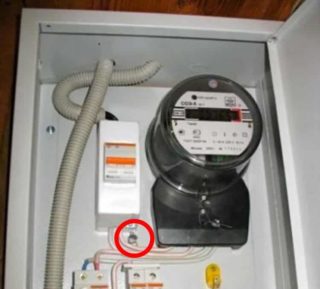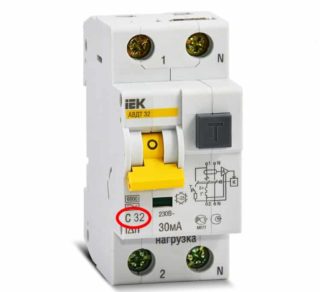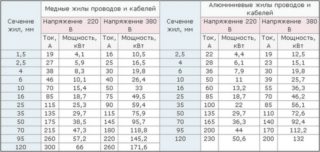Based on par. 7 p. 2 of Regulation No. 861, the maximum installed electric capacity is the largest amount of capacity that can be provided by the electricity provider. It is measured in kilowatts, is taken into account by general house and apartment appliances, and is paid according to the established tariff. But in some cases, the capacity is not enough, and consumers begin to think about increasing it by legal means.
- What is "allocated capacity" of electricity
- What threatens to exceed the permitted power
- Rules and regulations
- How to find out how much power is allocated
- Calculation of the required power
- How many kilowatts can the wiring in the apartment withstand?
- How to increase the allocated capacity
- For individuals
- For legal entities and firms
What is "allocated capacity" of electricity

The permitted power of energy in an apartment is the maximum value that a consumer can use at a time. The maximum load on the consumer network is always prescribed in the power supply contract.
To fully understand the issue of allowable power, it is worth understanding its types. Today there is a capacity:
- connected - the sum of the power indicators of all electrical equipment connected to the network;
- installed - indicated in the documentation for the equipment and provides for the operation of the devices in normal mode;
- one-time - is determined on the basis of calculations of the power consumption of devices for a specific period of time;
- temporary or permitted - the maximum indicator that the power supply company provides to the user.
The regulation of the relationship between the electricity provider and the consumer was approved by the Ministry of Energy of the Russian Federation on January 19, 2002.
What threatens to exceed the permitted power

On the basis of Decree of the Government of the Russian Federation No. 624, if the maximum load is exceeded, the electric company has the right to restrict the consumer's access to the power grid. The reason is non-compliance with obligations under the electricity supply contract.
In case of accidents or during work on the power line, Energosbyt employees take measurements. In cases of detection of inaccuracies, they send notifications. The user must take measures to eliminate the overcapacity within 10 days. The degree of his responsibility is determined by the violation:
- ignoring the notification after 10 days - turning off the power supply to the object;
- connection bypassing the line - charging a fine, recalculating power according to the maximum indicator from the moment of verification, connecting to the general network at the expense of the offender;
- non-contractual use - a penalty for lack of agreement, recalculation according to the normal power indicator.
The basis for the termination of the sanctions is documentary evidence of the measures taken. However, UOMPE, CCD and PZR-devices are installed on the user's line.
The act of neglect is drawn up in the presence of 2 witnesses, with photo and video filming of the process.
Rules and regulations

Electrification of residential, administrative, industrial facilities is carried out on the basis of the technical specifications of the provider organization. One of the clauses of the contract specifies how much power will be allocated to the consumer network. The basis for the statement of capacity and the formation of technical specifications are calculations.
The electrical connection to residential and public buildings is carried out in accordance with SP 31-110-2003 and temporary instructions PM 2696-01.The documents state that the allocated electrical power for households that consume electricity of the 1st category is not standardized. Objects are connected based on requests.
The housing stock of the 2nd category has two electrification standards:
- from 5 to 7 kilowatts - the norm for a private house or apartment where a gas type of stoves is installed;
- from 8 to 11 kW - for objects where there is an electric stove.
Least of all power is accounted for by a small apartment and a house built under the social housing program.
Today, the standards from 2006 are in force. In buildings prior to this period, the power release is much lower.
How to find out how much power is allocated

You can find out reliably how many kilowatts are needed for an apartment with a gas or electric stove in this way:
- Contact your energy provider for help. The service is paid, depending on the region. A certificate from Mosenergosbyt, for example, depending on the type of object, costs 1.3-3.1 thousand rubles.
- Find the data in the power supply agreement or TU.
Independent calculations are made based on the parameters of the input protection device. The user needs to know the operating current and then perform mathematical calculations. For example, the indicator of the operating current is 32 A. To calculate the maximum load limit, the formula P max = U x I nom x 0.8 is used; where U is the rated mains voltage. That is, 230 x 32 x 0.8 ≈ 5.5 kW.
Calculations based on meter readings are not always correct due to the built-in load relay.
Calculation of the required power
Calculations are performed if you want to determine whether the allocated volume is sufficient. The maximum load is calculated as the sum of all devices switched on at the same time. If you lose the data sheet or overwrite the sticker on the equipment, you should refer to the data in the table.
| Consumers | Power, W |
| Appliances | |
| Electric stove | 1100-6000 |
| Hair dryer | 450-2000 |
| Iron | 600-2000 |
| Heater | 1000-2400 |
| A vacuum cleaner | 400-2000 |
| Television | 100-400 |
| Washing machine | 1000-3000 |
| Refrigerator | 150-2000 |
| A computer | 400-750 |
| Teapot | 1000-3000 |
| Fan | 750-1700 |
| Instruments | |
| Perforator | 600-1400 |
| Drill | 400-800 |
| Circular Saw | 750-1600 |
| Mowing machine | 750-2500 |
| Jigsaw | 250-700 |
| Circulating saw | 1800-2100 |
| Grinder | 650-2200 |
| Household equipment | |
| Compressor | 750-2800 |
| Water pump | 500-900 |
| Air conditioning | 1000-3000 |
| Fan | 750-1700 |
| A gas boiler | 40-1000 |
| Electric boiler control | 1000 |
Having calculated the amount of consumption, you need to indicate the reserve when the load increases. The devices will consume 20-30% more than the calculated value. The sum of the two indicators is the final result. With a calculated power below the declared one, you can apply for an additional 1-3 kW.
How many kilowatts can the wiring in the apartment withstand?

Under ideal conditions, a standard copper conductor with a cross section of 2.5 mm2 withstands a load of 5.9 kW, from aluminum - 4.4 kW.
Under operating conditions, aluminum conductors of old houses with a cross-section of 2.5 mm2 can withstand 3.5 kW at a current of 16 A. APPV of 6 mm2 do not burn out at a load of 5.5 kW and a current of 25 A. Wires with a cross-section of 4 mm2 will withstand 4, 4 kW at a current of 25 A.
According to the rules of the PUE, a three-core copper wire with a cross section of 1.5 mm2 must withstand a maximum permissible load of 5.9 kW. Cable for 4 mm2 - 8.3 kW at a current of 28 A. Conductor with a cross section of 6 mm2 at a current of 46 A - 10.1 kW.
How to increase the allocated capacity
The power of electricity in an apartment or a private house can be increased based on new technical conditions. The document is valid for 2 years. It prescribes:
- new indicators of the permitted power;
- voltage parameters - 380 or 220 V;
- environmental standards;
- ways to control the consumption and conservation of electricity.
The peculiarities of the appeal for individuals and legal organizations differ.
For individuals

You need to install additional power in stages:
- Collection of documents - a certificate or agreement on the ownership of real estate, a certificate with the current power parameters, an agreement with an energy supplier, an act of separate operational responsibility.
- Implementation of the building electrification scheme.
- Coordination with the company-provider of the possibility of increasing the capacity.
- Signing of the project in Energonadzor.
- Inspection - the power plant is inspected and tested.
- Drawing up a report and tolerance for an increase in power load. The first document is prepared by an employee of the energy company, the second - by a representative of Energonadzor.
All documents are sent to the supplier, which makes the final decision.
For legal entities and firms
The sequence of the procedure is similar to that for private users. Only the documents differ. An ordinary citizen presents a passport, and a legal entity - constituent papers. They are certified with a wet round seal and an authorized signature.
If the papers on the technical connection do not contain information about the maximum power parameters or they have been lost, the network company has the right to reissue. It is implemented on the basis of a consumer statement in the form established by the organization. The electricity supplier, in accordance with Regulation No. 861, should not expand the list of documents and request additional data.








